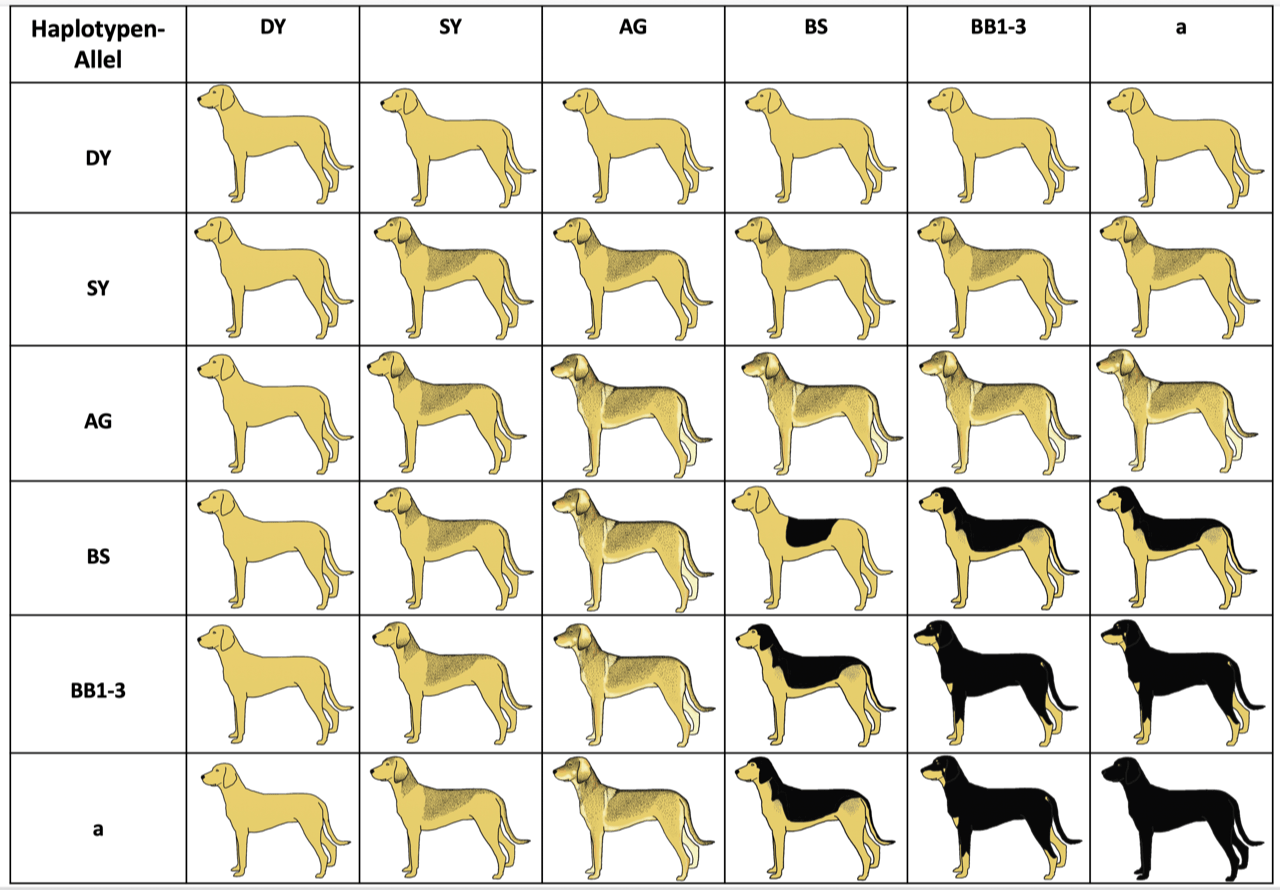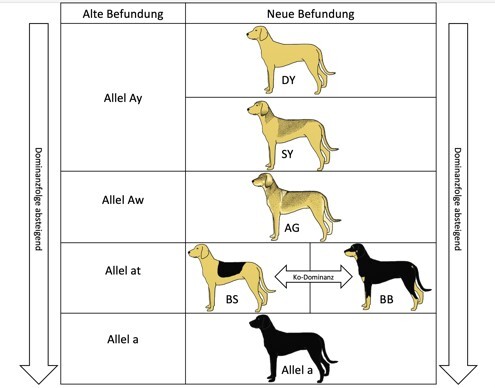Locus A
The previous genetic test for the A locus (ASIP) could differentiate between the allels Ay, Aw, at and a. The allele Ay stood for dominant yellow (fawn/sable), the allele Aw for wild colours (agouti), the allele at for black and tan and the allele a for recessive black.
With the classic analysis it was not possible to distinguish whether a dominant yellow dog with an Ay-allel had dark hair tips (so-called shaded sable) or not (clear sable). It was also not possible to distinguish whether a dog with the genotype at/at (or at/a) was black and tan or saddle tan.
A more recent test, based on the results of an international group of researchers, identifies various so-called promoters in the area of the ASIP gene which allows a preciser analysis compared to the previous test. The new test can differentiate between the following haplotypes:
- Yellow without black hair tips (dominant yellow, DY)
- Yellow with dark hair tips (shaded yellow, SY)
- Wild colours (agouti, AG)
- Saddle tan (black saddle, BS)
- Black and tan (black back, BB)
- Recessive black
The test detects variants for both the so-called ventral promoters (VP) and hair cycle promoters (HCP). The VPs control the expansion of eumelanin (dark pigment) over the dogs entire body. The HCPs control the expansion of eumelanin along the individual hair shafts. The new test differentiates between two different VP variants (VP1 and VP2) and five different HCP variants (HCP1, HCP2, HCP3, HCP4 and HCP5). Depending on which VP and which HCP is located on a chromosome in each individual case (in the so-called haplotype), this haplotype is associated with the designations DY, SY, AG, BS or BB. The analysis of recessive black (genotype a/a) has not changed and is tested and determined as before.
The new testing system leads to the following possible combinations of the new haplotypes:

Table 1: The new haplotypes.
The following table shows the comparison of the previous allels with the new haplotypes and the improved differentiation that is possible with the new test.

With the help of the new analysis, questionable cases with the conventional results of the A locus test, such as black and tan coloured dogs with the genotype Aw/Aw, which occasionally occurred in Border Collies, Miniature Schnauzers, Poodles and Nordic breeds, can now be explained better as well.
In addition, with the help of the new findings, black and tan (BB) and saddle tan (BS) as well as clear sable (DY) and shaded sable (SY) can be differentiated from each other.
However, as before the actual coat colour of a dog is not only determined by the genetics on the A-Locus, but it is always the result of the interaction of all gene loci regarding coat colours. For example, a dog must have the ky/ky genotype at the K-locus to enable a full expression of the A-Locus genetics. The E-locus with its many possible genetic variants (e.g. e1, eA, eg) can also influence the extension of eumelanin and thus modify the phenotypes determined by the A- and K-locus.


